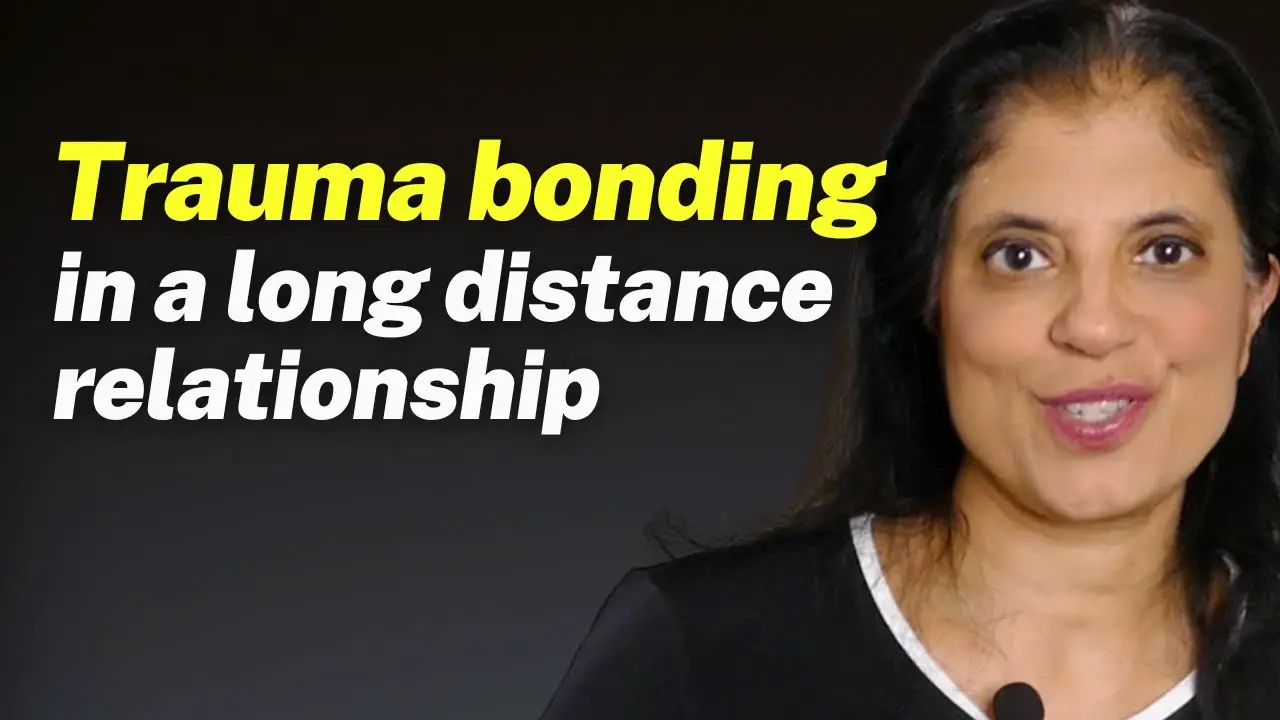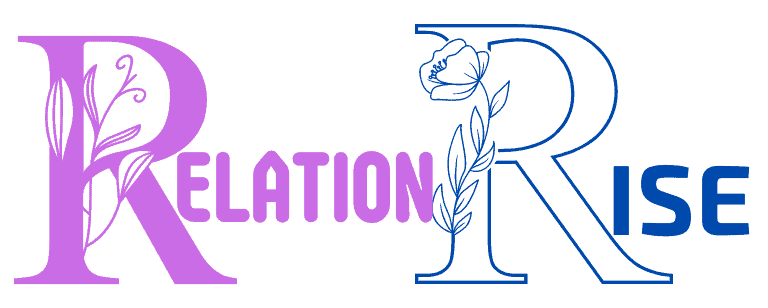How to Distance from Trauma Bond Relationship
To distance from a trauma bond relationship, seek professional help and set clear boundaries. It’s important to prioritize your own well-being and create a support system to break free from the cycle of trauma bonding.
Trauma bonding can be a deeply ingrained pattern, but it is possible to overcome with the right guidance and determination. When you’re in a trauma bond relationship, it can be challenging to untangle yourself from the emotional and psychological ties that keep you connected to your abuser.
However, with the right approach and support, you can distance yourself from the trauma bond and begin a journey towards healing and recovery. This article will provide insight into understanding trauma bonds, recognizing the signs, and practical steps to break free from this destructive cycle. By implementing these strategies, you can reclaim your self-worth and move towards healthier, fulfilling relationships.

Understanding The Dynamics Of Trauma Bonding
Understanding the dynamics of trauma bonding is crucial for recognizing and breaking free from toxic relationships. Trauma bonding refers to a strong emotional connection that forms between a victim and an abuser, often as a result of enduring repetitive cycles of abuse and intermittent reinforcement. In a trauma bond, the victim becomes psychologically attached to the abuser, making it difficult to leave the relationship, even when it is harmful. By delving into the definition, characteristics, and impact of trauma bonding, individuals can gain insight into the complex nature of these relationships and empower themselves to seek healing and freedom.
Definition And Characteristics
Trauma bonding is a deep psychological connection that develops between an abused individual and their abuser due to intense, emotional experiences. It is characterized by a compelling attachment to the person inflicting harm, often in the form of manipulation, control, or violence. This bond forms through a cycle of kindness and abuse, leading the victim to rationalize and justify the abuser’s behavior, ultimately fostering a sense of dependency and loyalty.
Impact On Emotional And Mental Well-being
The effects of trauma bonding on emotional and mental well-being are profound and enduring. Victims may experience a range of detrimental outcomes, including anxiety, depression, low self-esteem, and post-traumatic stress disorder. The constant state of confusion and fear created by trauma bonding can lead to a erosion of self-worth and identity, making it challenging to break free from the cycle of abuse. Additionally, trauma bonding may result in an impaired ability to trust others, form healthy relationships, and make independent choices, further deepening the psychological impact.
Identifying Codependency Patterns
Identifying codependency patterns is an essential step in distancing oneself from a trauma bond relationship. Codependency in relationships often leads to enabling and justifying toxic behavior and a loss of personal boundaries. Recognizing these patterns is crucial for breaking free from the grip of a trauma bond and fostering healthier relationships in the future.
Enabling And Justifying Toxic Behavior
Enabling and justifying toxic behavior is a common trait in codependent relationships. This often involves making excuses for the harmful actions of the other person and assuming responsibility for their behavior. It manifests as an incessant need to please the other person at the expense of one’s own well-being and moral values. By being aware of these tendencies, individuals can begin to distance themselves from toxic dynamics and set healthy boundaries.
Loss Of Personal Boundaries
In codependent relationships, a loss of personal boundaries occurs as individuals prioritize the needs and desires of their partner over their own. This leads to a disregard for personal well-being and autonomy, often resulting in feelings of resentment and emotional exhaustion. Recognizing the erosion of personal boundaries is paramount in breaking free from the cycle of trauma bonding and forging relationships built on mutual respect and autonomy.
Establishing Healthy Boundaries
Establishing healthy boundaries is a crucial step in distancing oneself from a trauma bond relationship. It involves setting clear limits and learning to say ‘no’ in order to prioritize your well-being and emotional health.
Learning To Say ‘no’
Learning to say ‘no’ is empowering and essential in breaking free from a trauma bond. It involves asserting yourself and setting boundaries to protect your mental and emotional well-being. Saying ‘no’ can be liberating and a significant step towards reclaiming control over your life.
Setting Clear, Non-negotiable Limits
Setting clear, non-negotiable limits is imperative in moving away from a trauma bond relationship. It involves communicating your boundaries firmly and consistently. Establishing these limits reinforces your self-worth and signals to the other person that certain behaviors are unacceptable.
Building A Support Network
Building a support network is crucial when it comes to distancing yourself from a trauma bond relationship. Surrounding yourself with positive influences and seeking professional help are vital steps in this journey. By building a robust support network, you empower yourself to break free from the cycle of trauma bonding and move towards healing and recovery.
Seeking Professional Help
Seeking professional help is an essential step in breaking free from a trauma bond. Therapists and counselors can provide guidance and support as you navigate the challenges of distancing yourself from a toxic relationship. Professional help offers you a safe space to process your emotions, gain insight into the dynamics of the trauma bond, and develop healthy coping strategies.
Surrounding Yourself With Positive Influences
Surrounding yourself with positive influences is key to breaking the hold of a trauma bond. Building a support network of trusted friends and family members who provide emotional support and encouragement is essential. Positive influences can offer empathy, validating your experience, and providing a sense of belonging outside of the toxic relationship.
Cultivating Self-compassion And Self-care
After breaking free from a trauma bond relationship, it’s crucial to prioritize your well-being by cultivating self-compassion and self-care. By acknowledging and tending to your personal needs, practicing mindfulness, and regulating your emotions, you can embark on a journey of healing and self-discovery.
Recognizing And Respecting Personal Needs
Recognizing and respecting your personal needs is essential in distancing yourself from a trauma bond relationship. This involves acknowledging and prioritizing your emotional, physical, and mental well-being. To achieve this, consider making a list of your needs and setting boundaries to ensure they are respected.
Practicing Mindfulness And Emotional Regulation
Practicing mindfulness and emotional regulation techniques can significantly aid in healing from a trauma bond relationship. Incorporate activities such as meditation, deep breathing exercises, and journaling into your daily routine to center yourself, regain emotional balance, and cultivate a sense of inner peace. By acknowledging and processing your emotions in a healthy manner, you can work towards breaking free from the harmful patterns associated with trauma bonds.
Rebuilding Self-identity And Confidence
Rebuilding self-identity and confidence is an essential step in distancing from a trauma bond relationship. It involves rediscovering personal goals and passions, and embracing growth and empowerment. By focusing on self-identity and confidence, individuals can reclaim their sense of worth and create a positive and fulfilling future for themselves.
Rediscovering Personal Goals And Passions
Rediscovering personal goals and passions is a critical aspect of rebuilding self-identity and confidence. It involves taking the time to reflect on individual aspirations and dreams, separate from the influence of the trauma bond relationship. By reconnecting with personal goals and passions, individuals can regain a sense of purpose and direction.
Embracing Growth And Empowerment
Embracing growth and empowerment is a transformative process that contributes to rebuilding self-identity and confidence. It involves recognizing one’s strengths and capabilities, and actively pursuing opportunities for personal development and self-improvement. By embracing growth and empowerment, individuals can foster a strong sense of self-worth and resilience.
Frequently Asked Questions Of How To Distance From Trauma Bond Relationship
What Is A Trauma Bond Relationship?
A trauma bond relationship is a strong emotional connection formed under stressful and abusive circumstances.
How Can You Identify A Trauma Bond Relationship?
Recognize patterns of emotional manipulation, control, and dependency in the relationship dynamics.
What Are The Signs Of Being In A Trauma Bond Relationship?
Signs include feeling trapped, fear of leaving, prioritizing the abuser’s needs, and self-worth issues.
Why Is It Important To Distance From A Trauma Bond Relationship?
It’s crucial for mental and emotional well-being, self-love, and the opportunity for healthy relationships.
How Can One Safely Distance From A Trauma Bond Relationship?
Seek support from trusted individuals, establish boundaries, consider therapy, and prioritize self-care and healing.
What Are Some Steps To Heal After Leaving A Trauma Bond Relationship?
Engage in self-reflection, seek professional help, practice self-compassion, and focus on personal growth and recovery.
Conclusion
In sum, breaking free from a trauma bond relationship can be challenging, but gaining distance is crucial for your well-being. By recognizing the signs, seeking support, and focusing on self-care, you can reclaim your autonomy and create a healthier future.
Remember, you deserve a relationship grounded in respect and love.




